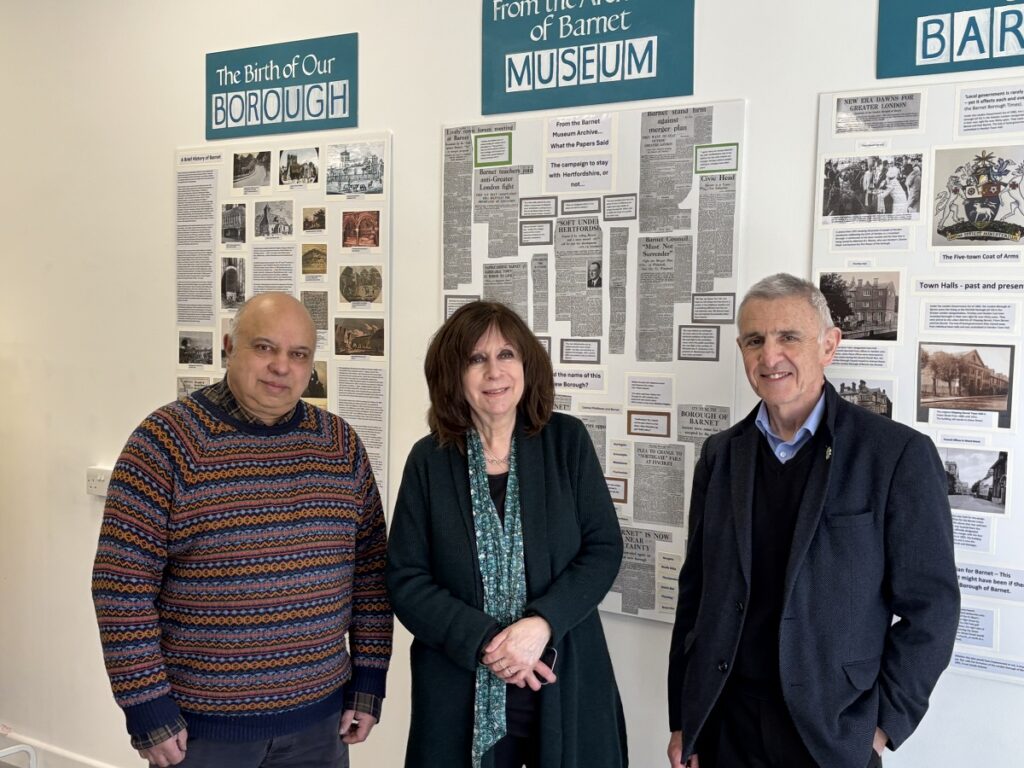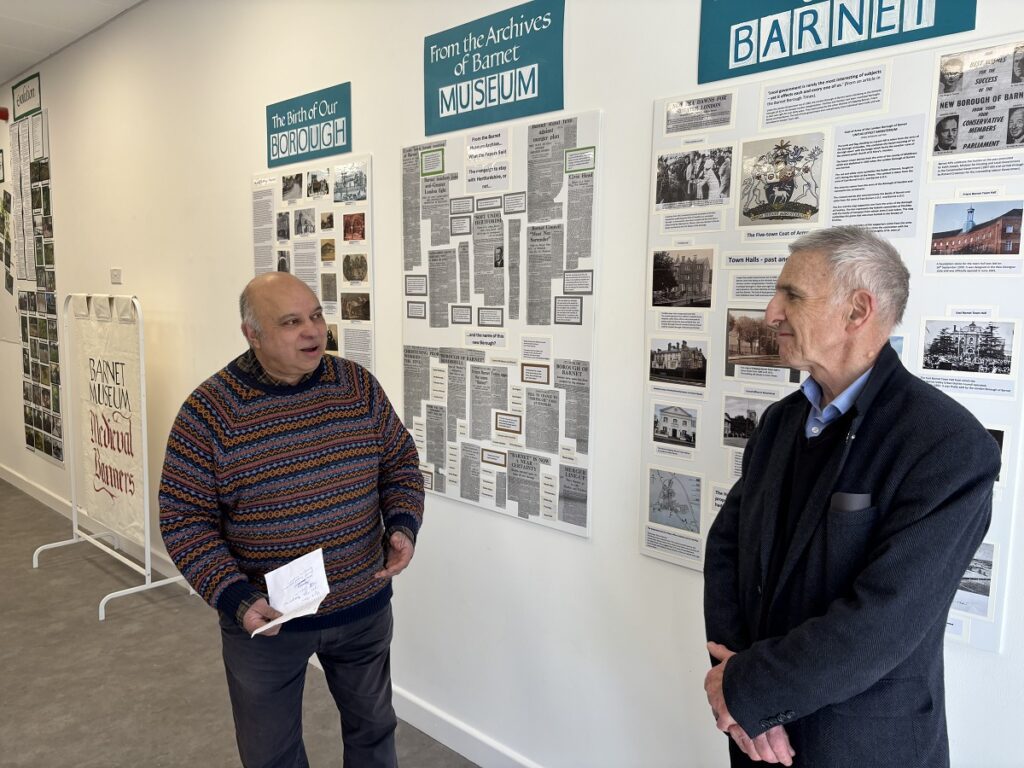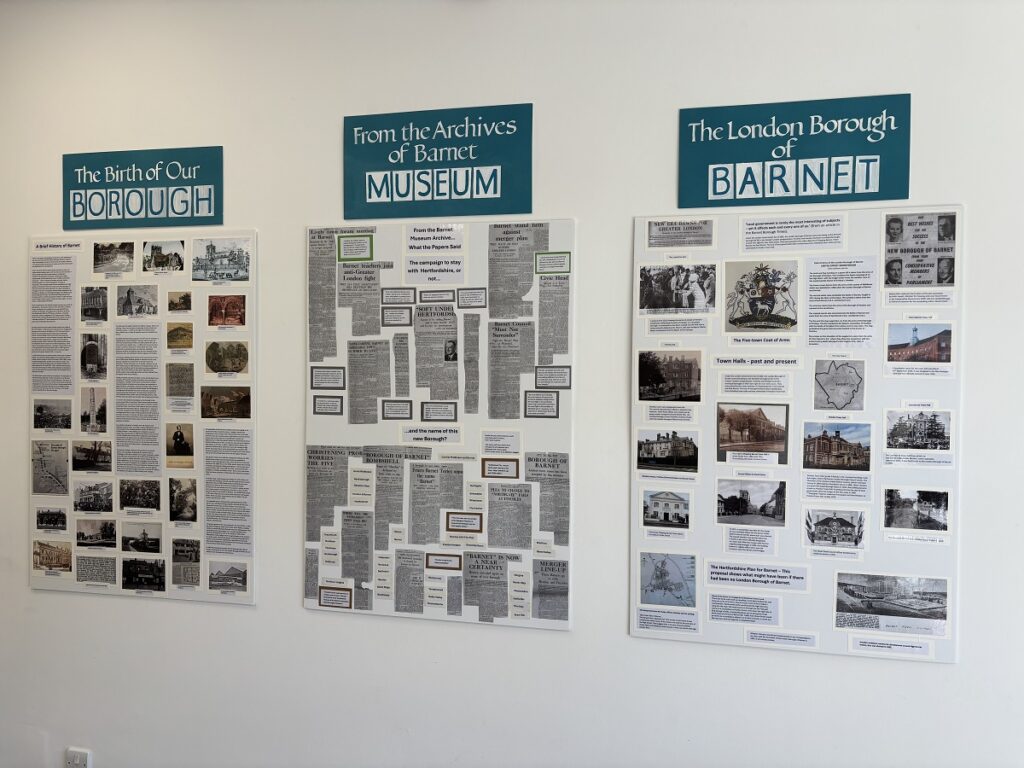Reliving the argument when Finchley and Hendon lost out to the three Barnets in deciding the name of the London Borough of Barnet

Information boards celebrating the 60th anniversary of the creation of the London Borough of Barnet are on display at Barnet Museum’s shop in The Spires shopping centre and at the Chipping Barnet Library.
Councillor Paul Edwards (above, far right), who opened the Barnet Museum display, recalled what it must have been like at the height of the disagreement about choosing a name for the new borough – especially when there was a real push at the time for Barnet to remain within Hertfordshire rather than become part of Greater London.
He believed that the Conservative minister at the time, Sir Keith Joseph, made the right decision in 1964 when the three Barnet urban district councils – Barnet, East Barnet and Friern Barnet – were amalgamated with Finchley and Hendon to establish what has become the London borough with the second largest population.
“When I used to work at Barnet Council there were still councillors who thought the Barnets should have stayed within Hertfordshire.
“I think it was the right decision to group them together within the Greater London Authority area.
“Keith Joseph made it happen. We can see now why the integration of the boroughs is crucial for the transport system and for the boroughs working together.”
Councillor Edwards was welcomed by museum curator Mike Noronha (above, left) and deputy curator, Hilary Harrison, who organised the collection and assembly of information for the display boards.
Such was the depth of the disagreement about what to call the newly created borough that a wide array of alternative names was put out for consultation – some of them made up from the local place names.
Instead of it being the London Borough of Barnet, it might have been the London Borough of Finchendon, Barnfindon, Northsex, North Ridge, Northern Heights, Dollis Valley or Grimsdyke, to name but a few.
In the end, when the five district councils failed to agree on a name, Sir Keith had to step in.
Both Finchley and Hendon were insisting they should be the borough’s designated name, but the minister opted for Barnet, despite the combined population of the outer districts failing to exceed either Hendon or Finchley.

In welcoming Councillor Edwards, Mike Noronha explained why there was every justification for naming the borough after Barnet.
The town was granted a charter in 1199 to become a market town; in 1471 it was the scene of the Battle of Barnet; in 1588 it gained a charter for Barnet Fair; between the 1820s and 1940s Barnet became an important transport hub for London with the opening of a rail station at New Barnet and then High Barnet; trams and then trolley buses ascending Barnet Hill; the tube station opening in 1940; and became a football town when Barnet won the FA Cup in 1946.
A Royal Commission in 1921 was the first to recommend the amalgamation of the outer districts around London but no action was taken because of World War II and a second Royal Commission established in 1957 by Harold Macmillan made fresh proposals for amalgamation.
In 1963, Sir Keith began the process of choosing a new name for what became the London Borough of Barnet.
After he rejected all the various alternatives – and the claims of Finchley and Hendon – the Queen approved the name Borough of Barnet in January 1964.
The first elections for the new authority were held in May 1964 and they met for the first time on 1 April 1965 – a total of 56 six councillors and nine aldermen.

The museum’s display boards for the 60th anniversary feature photographs of the various former town halls – in Union Street and Wood Street, Barnet; and for East Barnet and Friern Barnet.
Among the newspaper cuttings is a feature based on Hertfordshire County Council’s plans to rejuvenate Barnet if the town had stayed within the county: one project was the construction of a town centre by-pass across St George’s Fields from the ponds on Hadley Green direct to Meadway.

